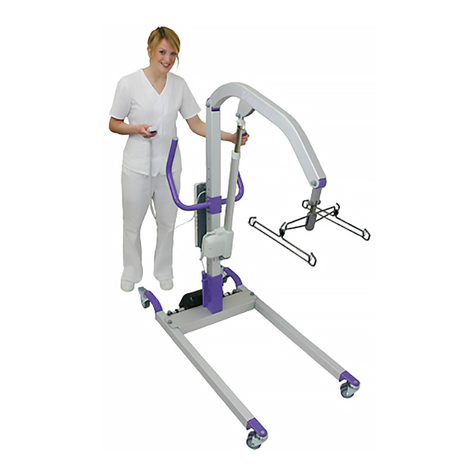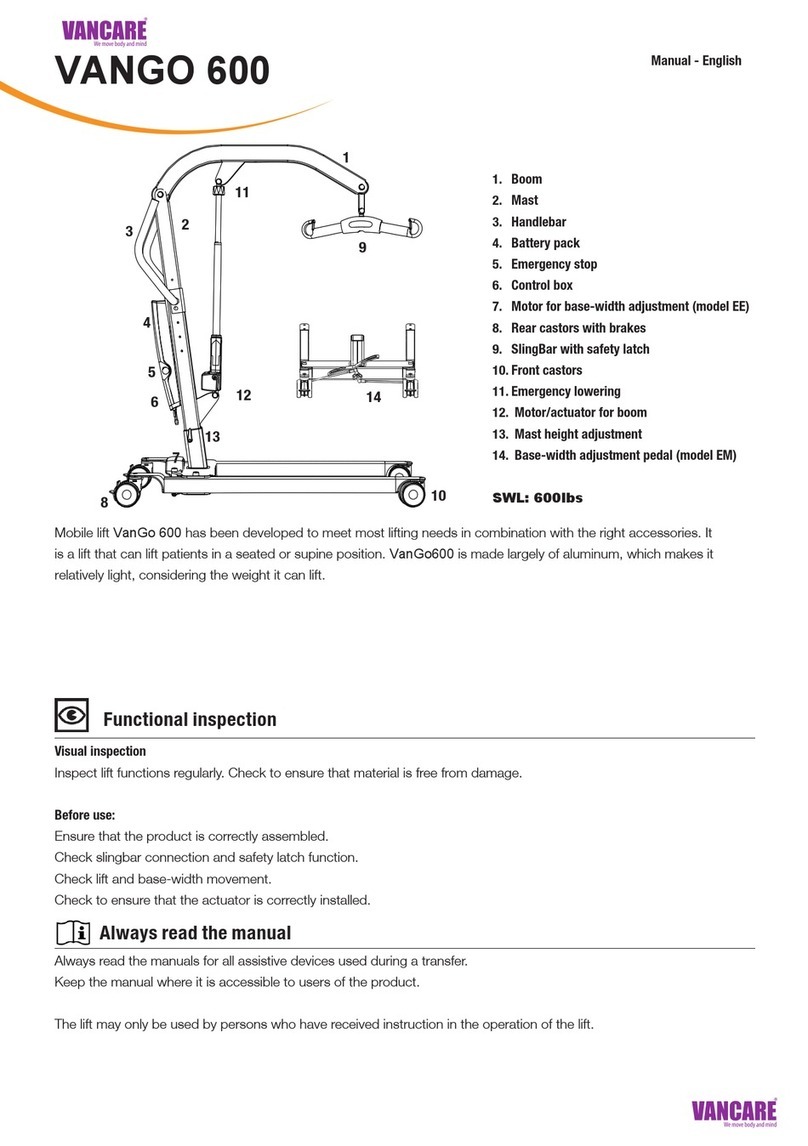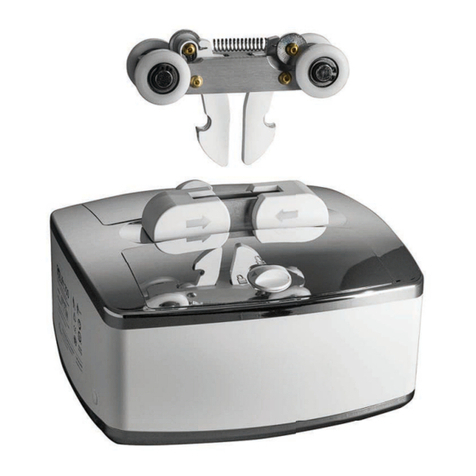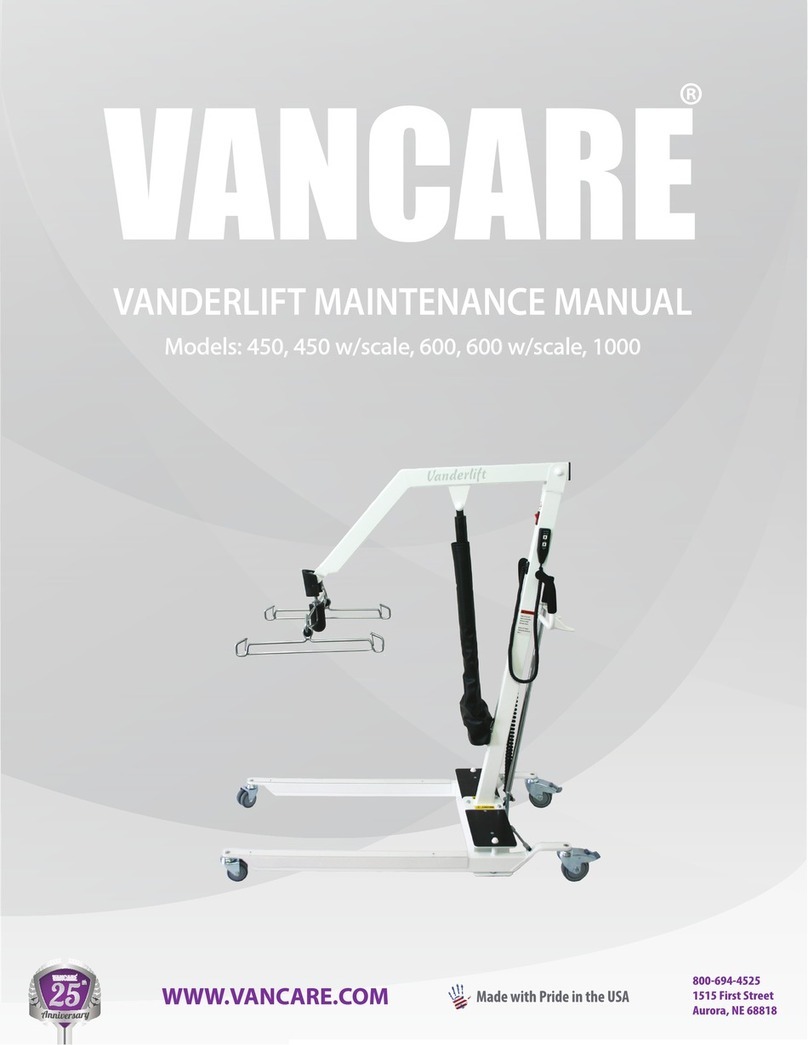
April 2013 For your nearest Distributor, call 1-800-694-4525 9
d) Be able to stand erect or lean back into the back belt with arms on the outside of the
back belt
e) Have no injuries or medical conditions that might be aggravated by the transfer
procedure
f) When using VERA V350, patient must weight less than 350 pounds; when using
VERA V600, patient must weight less than 600 pounds; VERA V800; less than 800 pounds.
2) The Patient May:
a) Have unpredictable behavior, for example: patients with dementia - as long as
behavior exhibited does not pose a safety hazard for the patient or for staff members
during VERA-LIFT™ transfers. (See “Patients Not Suited For VERA-LIFT™ Standing
Transfers” section below.)
b) Be unable to hold onto one or both hand grips
c) Have history of knee(s) giving way to side
d) Have one-sided paralysis or single lower extremity amputation
Standing Transfer with Crossed Straps and Buttock Support Strap
1) The Patient Must:
a) Have cooperative behavior - may not exhibit behavior that might pose risk of injury
to the patient or for staff members during VERA-LIFT™ standing transfers, (See
“Patients Not Suited For VERA-LIFT™ Standing Transfers” section below.)
b) Be able to follow simple directions
c) Be able to bear weight on at least one leg
d) Be able to stand erect or lean back into the back belt with arms on the outside of the
back belt
e) Have no injuries or medical conditions that might be aggravated by the transfer
procedure
f) When using VERA V350, patient must weight less than 350 pounds; when using
VERA V600, patient must weight less than 600 pounds; V800; less than 800 pounds.
2) The Patient May:
a) Have unpredictable behavior, for example: patients with dementia - as long as
behavior exhibited does not pose a safety hazard for the patient or for staff members
during VERA-LIFT™ transfers. (See “Patients Not Suited For VERA-LIFT™ Standing
Transfers” section below.)
b) Be unable to hold onto one or both hand grips
c) Have history of knee(s) giving way to side
d) Have one-sided paralysis or single lower extremity amputation
e) Have one leg with weight-bearing restriction such as status post-hip or knee surgery
(assessment must be done by physical or occupational therapist to determine
appropriateness of transfer for individual patient)
f) Have decreased motor control and/or weakness with coming to standing position
Patients Not Suited For VERA-LIFT™ Standing Transfers
1) Patients whose unpredictable behavior during transfers poses risk of injury to
patients or staff. Examples are patients who:
a) Attempt to pick one or both feet off of the floor during gait belt transfers or off of the
VERA-LIFT™ foot pad during VERA-LIFT™ standing transfers
b) Attempt to climb the knee pad
c) Attempt to step backward off of the VERA-LIFT™ foot pad
d) Are unpredictably able to bear weight
For your nearest distributor, call 1-800-694-4525
































